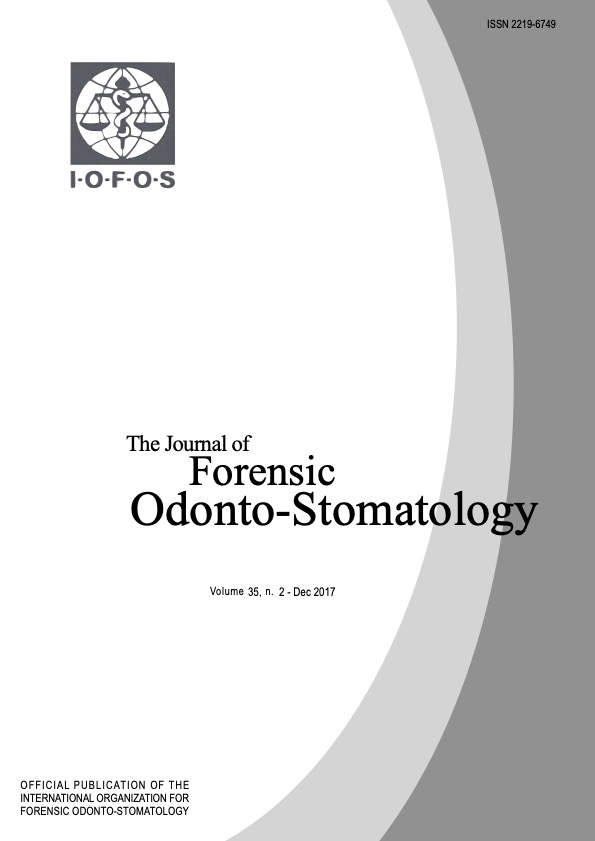Periodontal Ligament Visibility (PLV): validation of PLV to determine adult status
Abstract
Background: Gradual obliteration of the Periodontal Ligament Visibility (PLV) of lower third molars indicates increasing age. This is used to help determine whether or not an age disputed subject is above or below the 18 year threshold.
Aim: The main focus was to determine, in test subjects of known age, whether the PLV system used ‘blind’ is able to reliably indicate whether the subject was a child (age <18 years) or adult (age >18).
Materials and methods: A total of 250 normal subjects in the age range 16 to 26 years, from the archives of Guy’s Hospital in London, UK, were used to validate the system of PLV. The radiographic assessment of PLV1 was used to categorise four grades of PLV.
Results: It was found that for both females and males PLV-C and PLV-D gave very high probabilities (p = 1.000) of the test subjects being of adult status.
Conclusion: Periodontal Ligament Visibility has the potential to play an important part in the assessment of age disputed asylum seekers who look adult and claim to be children.

